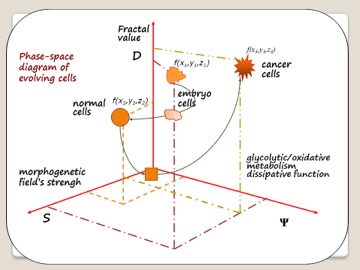Dipartimento di Matematica Guido Castelnuovo, Università Sapienza Roma

Abstract: The process of lineage specification is fundamental to the development and maintenance of tissues in multicellular organisms. An unsolved question is whether molecular cues such as growth factors actively push multipotent progenitors to commit to a particular lineage according to the so-called ‘instructive’ model. The opposite view posits that molecular cues simply support the survival and proliferation of cells that have already committed to a specific lineage by cell intrinsic agency or by environmental physical cues, in agreement with the ‘selective/permissive’ model. Ectopic-expression experiments have supported the instructive capacity of specific cytokines, even if a number of artifacts biased these models. Indeed, exposure to growth factors may have only an ‘enabling’ rather than an inductive role during cell fate specification. For instance, in microgravity conditions spontaneous, phenotypic determination occurs independently from any biochemical ‘signal’ that could act as ‘instructive’ cue, while the promoting cell fate transition occurs once the gravity constraint has been ‘wiped out’. Indeed, a cell population requires proper physical constraints to be committed towards a specific differentiating pathway. In absence of such physical cues, the intrinsic biological ‘variability’ cannot be properly ‘selected and canalized’ into a specific phenotype. We proposed an integrated model based on top-down causation processes borrowed from microgravity-based experiments, were system’s global factors show to be instrumental in shaping both morphology and function of lower constituents. Interactions among different levels is likely to occur according to nonlinear dynamics, involving biophysical and molecular cues. Cell fate transition, in both normal and pathological condition (as for cancer), may be framed according to the non-equilibrium thermodynamics. In agreement with this paradigm, the phenotypic determination may be represented by a Waddington’s landscape, where both irreversible and irreversible transition can happen. Within this perspective, cancer development can be viewed as a phenotypic differentiation ‘gone awry’, but still ‘reversible’ when different global constraints are modified. Yet, proper modelling as well as mathematical analysis of such process still awaits a compelling conceptualization.

